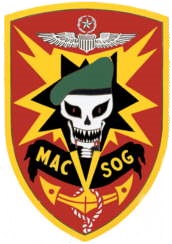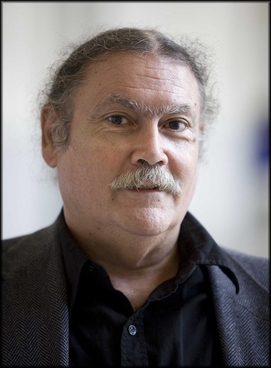Related Research Articles

A wargame is a strategy game in which two or more players command opposing armed forces in a simulation of an armed conflict. Wargaming may be played for recreation, to train military officers in the art of strategic thinking, or to study the nature of potential conflicts. Many wargames re-create specific historic battles, and can cover either whole wars, or any campaigns, battles, or lower-level engagements within them. Many simulate land combat, but there are wargames for naval, air combat, and cyber as well as many that combine various domains.

James F. Dunnigan is an author, military-political analyst, Defense and State Department consultant, and wargame designer currently living in New York City.

Military Assistance Command, Vietnam – Studies and Observations Group (MACV-SOG) was a highly classified, multi-service United States special operations unit which conducted covert unconventional warfare operations before and during the Vietnam War.

Tactical wargames are a type of wargame that models military conflict at a tactical level, i.e. units range from individual vehicles and squads to platoons or companies. These units are rated based on types and ranges of individual weaponry. The first tactical wargames were played as miniatures, extended to board games, and they are now also enjoyed as video games.

Military simulations, also known informally as war games, are simulations in which theories of warfare can be tested and refined without the need for actual hostilities. Military simulations are seen as a useful way to develop tactical, strategical and doctrinal solutions, but critics argue that the conclusions drawn from such models are inherently flawed, due to the approximate nature of the models used. Many professional analysts object to using the term wargames for simulations as wargames require human players that make decisions and deal with the consequences of their decisions.

Air wargaming, like naval wargaming, is a niche specialism within the wider miniatures wargaming hobby. Due to the relatively short time over which aerial combat has developed air wargaming periods tend to break down into three broad periods:

Albert A. Nofi, is an American military historian, defense analyst, and designer of board and computer wargaming systems.

Panther Games Pty Ltd is an Australian games developer, best known for the WWII Airborne Assault and Command Ops PC video game series. Panther Games specialises in developing operational level wargames for the PC Wargame market.
The Sigma war games were a series of classified high level war games played in the Pentagon during the 1960s to strategize the conduct of the burgeoning Vietnam War. The games were designed to replicate then-current conditions in Indochina, with an aim toward predicting future events in the region. In almost all runs, the outcome was either a communist win, or a stalemate that led to protests in the US.
The Sigma I-65 war game was one of a series of classified high level war games played in The Pentagon during the 1960s to strategize the conduct of the burgeoning Vietnam War. These simulations were designed to replicate then-current conditions in Indochina, with an aim toward predicting future foreign affairs events. They were staffed with high-ranking officials standing in to represent both domestic and foreign characters; stand-ins were chosen for their expertise concerning those they were called upon to represent. The games were supervised by a Control appointed to oversee both sides. The opposing Blue and Red Teams customary in war games were designated the friendly and enemy forces as was usual; however, several smaller teams were sometimes subsumed under Red and Blue Teams. Over the course of the games, the Red Team at times contained the Yellow Team for the People's Republic of China, the Brown Team for the Democratic Republic of Vietnam, the Black Team for the Viet Cong, and Green for the USSR.
The Sigma I-66 war game was one of a series of classified high level war games played in The Pentagon during the 1960s to strategize the conduct of the burgeoning Vietnam War. Sigma I-66 was based on the unrealistic scenario of a famine-stricken and militarily diminished North Vietnam agreeing to de-escalate its war efforts. It ended with a hypothetical force of 100,000 Viet Cong still in South Vietnam.
The Sigma II-66 war game was one of a series of classified high level war games played in the Pentagon during the 1960s to strategize the conduct of the burgeoning Vietnam War. The games were designed to replicate then-current conditions in Indochina, with an aim toward predicting future foreign affairs events. They were staffed with high ranking officials standing in to represent both domestic and foreign characters; stand-ins were chosen for their expertise concerning those they were called upon to represent. The games were supervised by a Control appointed to oversee both sides. The opposing Blue and Red Teams customary in war games were designated the friendly and enemy forces as was usual; however, several smaller teams were sometimes subsumed under Red and Blue Teams. Over the course of the games, the Red Team at times contained the Yellow Team for the People's Republic of China, the Brown Team for the Democratic Republic of Vietnam, the Black Team for the Viet Cong, and Green for the USSR.
The Sigma I-62 war game, played in February 1962, was the first of a series of classified high level war games played in the Pentagon during the 1960s to strategize the conduct of the burgeoning Vietnam War. These simulations were designed to replicate then-current conditions in Indochina, with an aim toward predicting future foreign affairs events. The conclusion drawn from Sigma I-62 was that American intervention in Vietnam would be unsuccessful.
The Sigma I-64 war game, one of the Sigma war games, was played from 6 to 9 April 1964. Its purpose was to test scenarios of escalation of warfare in Vietnam. After rigorous research into information needed to form a scenario, a simulation took place, with knowledgeable officials playing out the roles of actual government decision makers. Participants were drawn from the State Department, Department of Defense, the Central Intelligence Agency, and the Joint Chiefs of Staff. In Sigma I-64, the scenarios to be examined were the burgeoning Viet Cong insurgency in Vietnam, and the possible use of U.S. air power against it.
The Sigma II-64 war game was one of a series of classified high level war games played in The Pentagon during the 1960s to strategize the conduct of the burgeoning Vietnam War. The games were designed to replicate then-current conditions in Indochina, with an aim toward predicting future foreign affairs events. They were staffed with high-ranking officials standing in to represent both domestic and foreign characters; stand-ins were chosen for their expertise concerning those they were called upon to represent. The games were supervised by a Control appointed to oversee both sides. The opposing Blue and Red Teams customary in war games were designated the friendly and enemy forces as was usual; however, several smaller teams were sometimes subsumed under Red and Blue Teams. Over the course of the games, the Red Team at times contained the Yellow Team for the People's Republic of China, the Brown Team for the Democratic Republic of Vietnam, the Black Team for the Viet Cong, and Green for the USSR.
The Sigma II-65 war game was one of a series of classified high level war games played in the Pentagon during the 1960s to strategize the conduct of the burgeoning Vietnam War. It was held between 26 July and 5 August 1965. The games were designed to replicate then-current conditions in Indochina, with an aim toward predicting future foreign affairs events. They were staffed with high ranking officials standing in to represent both domestic and foreign characters; stand-ins were chosen for their expertise concerning those they were called upon to represent. The games were supervised by a Control appointed to oversee both sides. The opposing Blue and Red Teams customary in war games were designated the friendly and enemy forces as was usual; however, several smaller teams were sometimes subsumed under Red and Blue Teams. Over the course of the games, the Red Team at times contained the Yellow Team for the People's Republic of China, the Brown Team for the Democratic Republic of Vietnam, the Black Team for the Viet Cong, and Green for the USSR.
The Sigma I-67 and II-67 War Games were two of a series of classified high level war games played in the Pentagon during the 1960s to strategize the conduct of the burgeoning Vietnam War. The games were designed to replicate then-current conditions in Indochina, with an aim toward predicting future foreign affairs events. They were staffed with high-ranking officials standing in to represent both domestic and foreign characters; stand-ins were chosen for their expertise concerning those they were called upon to represent. The games were supervised by a Control appointed to oversee both sides. The opposing Blue and Red Teams customary in war games were designated the friendly and enemy forces as was usual; however, several smaller teams were sometimes subsumed under Red and Blue Teams. Over the course of the games, the Red Team at times contained the Yellow Team for the People's Republic of China, the Brown Team for the Democratic Republic of Vietnam, the Black Team for the Viet Cong, and Green for the USSR.

John Frederick Prados was an American author, historian, and wargame designer who specialized in the history of World War II, the Vietnam War, and current international relations.

A wargame, generally, is a type of strategy game which realistically simulates warfare. A professional wargame, specifically, is a wargame that is used by military organizations to train officers in tactical and strategic decision-making, to test new tactics and strategies, or to predict trends in future conflicts. This is in contrast to recreational wargames, which are designed for fun and competition.
References
- Allen, Thomas B. (1987) War Games: The Secret World of the Creators, Players, and Policy Makers Rehearsing World War III Today. McGraw-Hill. ISBNs 0070011958, 9780070011953.
- Conboy, Kenneth and James Morrison (1995) Shadow War: The CIA's Secret War in Laos. Paladin Press. ISBN 0-87364-825-0.
- Gibbons, William Conrad (1995) The U.S. Government and the Vietnam War. Princeton University Press. ISBNs 0691006350, 978-0691006352.
- Sorley, Lewis (1998) Honorable Warrior: General Harold K. Johnson and the Ethics of Command (Modern War Studies). University Press of Kansas. ISBNs 0700609520, 978-0700609529.
- Stuart-Fox, Martin, Historical Dictionary of Laos. Scarecrow Press, 2008. ISBNs 0810864118, 9780810864115.